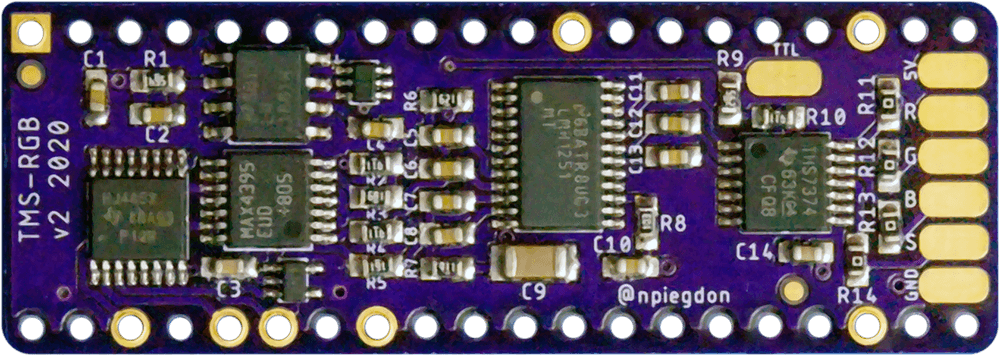TMS-RGB
An RGB mod for systems using TMS9928A and TMS9929A graphics
This small adapter board can unlock the potential of many 8-bit systems from the 1980's including the Colecovision, MSX, SG-1000, SC-3000, Memotech MTX, and more. Instead of the original output—often wavy, blurry RF with color fringing—soldering this tiny board directly to the back of your graphics chip will enable clean RGB output, ready to be sent to your favorite line doubler (like the OSSC), RGB monitor, or upscaler (like the Framemeister).
This solution is completely analog, introduces zero latency, works in NTSC or PAL systems, doesn't require any tuning, and can be installed easily. It outputs both buffered, video-level C-sync and 5V TTL-level C-sync so there are many options for interfacing with your favorite cables and output jacks.
TMS-RGB was developed in 2020 and solves all known issues found in previous TMS992xA mods of this kind.
The best place to get support is the official launch thread at AtariAge.
Ship your system to someone that has done this many times and offers a warranty.
Buy an assembled board and solder it onto the back of the VDP using your own tools.
Order the PCB, stencil, and components. Then assemble it with tweezers and an oven.
TMS-RGB is Open Source Hardware (OSH)
The schematics, board layouts, and other files have been released under a weak copyleft license and are available from the TMS-RGB GitHub repo.
The work was done collaboratively and in the open with help from the AtariAge community every step of the way. Read the Development Story for the complete motivation, timeline, and acknowledgements.
The technical details are interesting
The TMS992xA series has a couple technical quirks that made this a little less straightforward. Throw in a few misleading errors in the datasheet and you've got the recipe for a challenging problem.
Those quirks, where the past solutions fell short, and how TMS-RGB works around them are also covered in the Development Story.
